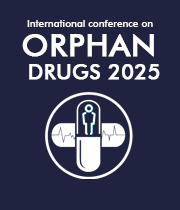Gene and Stem Cell Therapy
The insertion of genetic material into cells for therapeutic purposes is known as gene therapy. Stem cells are cells that can self-renew indefinitely and have the ability to differentiate into intermediate and mature cells. Adult stem cells, also known as tissue stem cells, create cells that are unique to the tissue in which they are located. They are relatively unspecialized, and when they differentiate, they are predestined to give rise to specific cell types. Different stem cell populations may be limited to specific developmental stages or cell types. The initial goal of gene therapy was to treat inherited genetic disorders by replacing a mutated gene with a functional one. On the other hand, stem cells were largely used for tissue repair. However, these technologies have a lot of overlap in their applications. In the treatment of hereditary and acquired disorders, both gene and stem cell therapies can be used. When two techniques are combined, their therapy potential is maximized. Gene therapy and stem cell research have grown in prominence in recent years.
- Hematopoietic Stem Cells
- Mesenchymal Stem Cells
- Neural Stem Cells
- Myoblasts
- Osteoblasts
- Limitations
- Control Over Gene Expression

Sergey Suchkov
The Russian University of Medicine & Russian Academy of Natural Sciences, Russian Federation
Vladlen Slepak
University of Miami, United States
Harsha Rajasimha
Jeeva Clinical Trials, Inc, United States
Vladlen Slepak
University of Miami, United States
Harsha Rajasimha
Jeeva Clinical Trials, Inc, United States
Sergey Suchkov
The Russian University of Medicine & Russian Academy of Natural Sciences, Russian Federation


Title : Emerging solutions for inclusive orphan drug clinical trials management
Harsha Rajasimha, Jeeva Clinical Trials, Inc, United States
Title : Ectopically expressed olfactory receptors as an untapped family of drug targets. Discovery of agonists and antagonists of OR51E1, an understudied G protein-coupled receptor
Vladlen Slepak, University of Miami, United States
Title : Personalized and Precision Medicine (PPM) as a unique healthcare model to secure the human healthcare and biosafety among childhood
Sergey Suchkov, The Russian University of Medicine & Russian Academy of Natural Sciences, Russian Federation
Title : Orphan and rare disease emerging as a global public health priority through the view of personalized and precision medicine: How to use the latter to revolutionize pediatric services
Sergey Suchkov, The Russian University of Medicine & Russian Academy of Natural Sciences, Russian Federation
Title : Personalized and Precision Medicine (PPM) though the view of reproductive healthcare, pediatric services and natural family planning: an option for clinicians and caregivers realize the potential of genomics-informed care to secure the individualized human biosafety
Sergey Suchkov, The Russian University of Medicine & Russian Academy of Natural Sciences, Russian Federation
Title : Democratizing ASO drug discovery at La Jolla Labs
Melissa Keenan, La Jolla Labs, United States